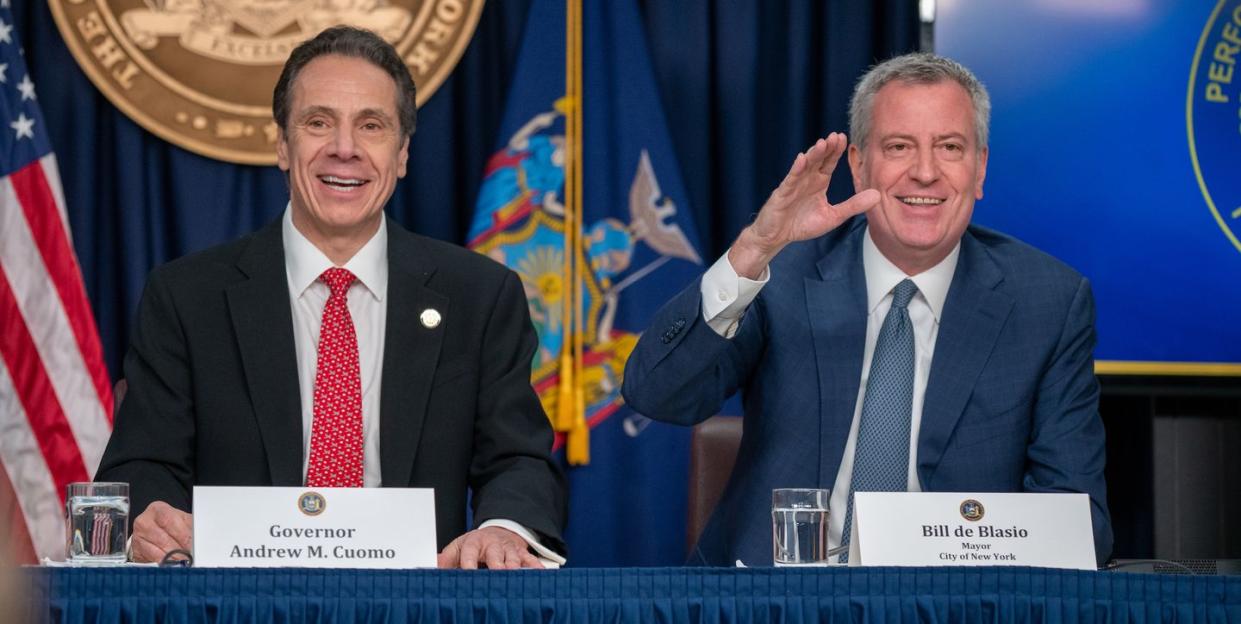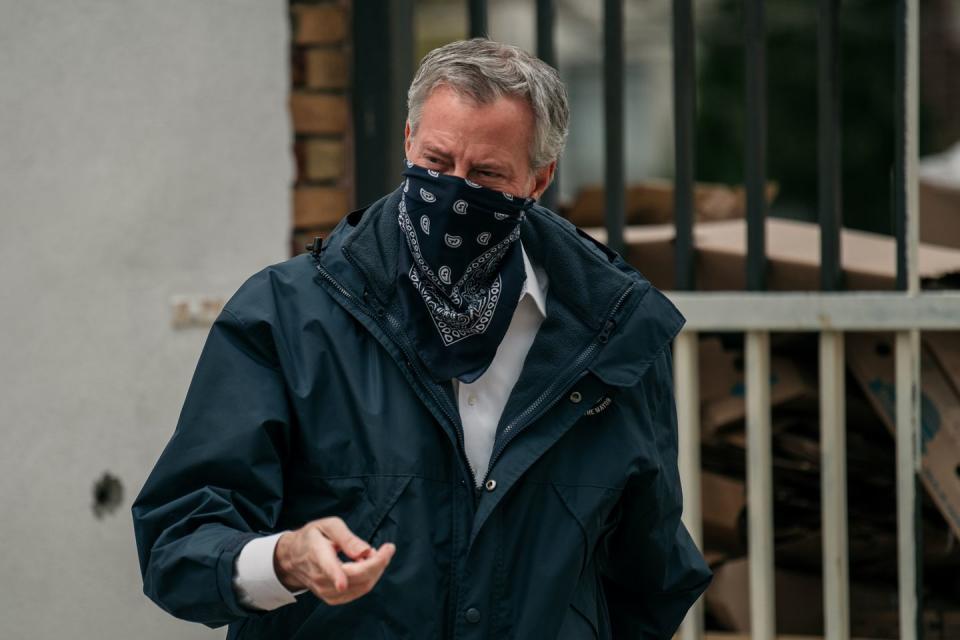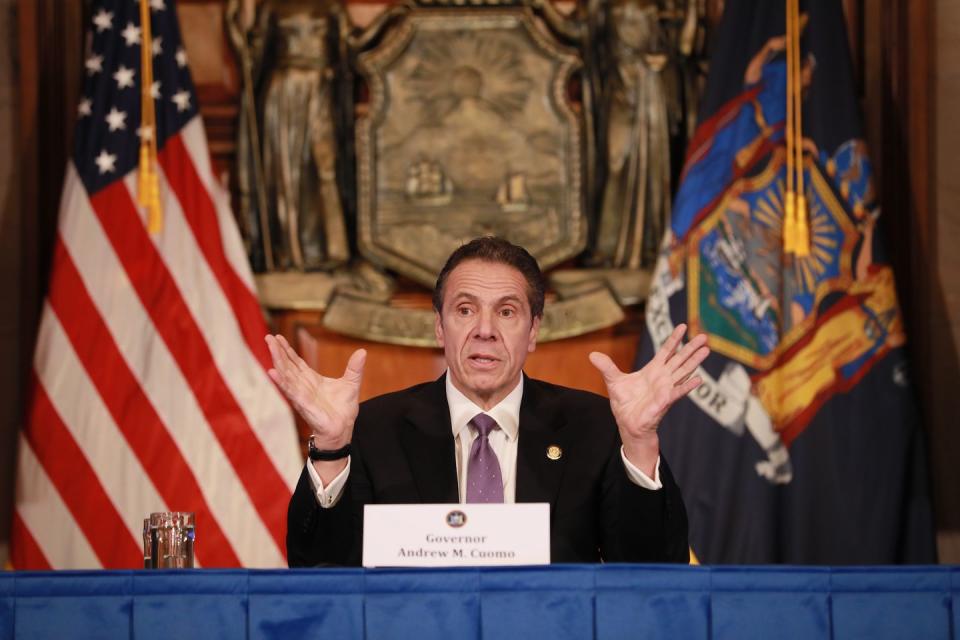New York Was at High Risk, But Its Political Leaders Also Botched the Response

It's easy enough to keep your attention fixed on the federal government's response to the novel coronavirus pandemic, particularly now that the National Republican Senatorial Committee has distributed a 57-page memo urging members of the president's party not to try to defend his work. Instead, it encourages Republicans running for office to blame China and blame Democrats for being "soft on China." Never mind that pretty much nobody praised the response from China or its president-for-life, Xi Jinping, more than Donald J. Trump. Surely, that had nothing to do with his desire to secure a trade deal before this year's election—or, for that matter, the $200 million loan the Bank of China gave one of Trump's buildings, which will soon come due. Meanwhile, the president's aides are manufacturing stories to the press about how he works hard, because that's the bar now.
But there are assessments to be made of more local leaders and the work they've done. In New York, for example, Governor Andrew Cuomo has developed a cult following—within and beyond the state's borders—with his daily press briefings, wherein he offers frank assessments of where things actually are, and tries to express empathy and find common experience with his audience. People love these basic, solid acts of leadership because they're everything the president does not do. But a new investigation from The New Yorker offers a look at what Cuomo did in the most critical period of the pandemic response, and while he so far has not mused about injecting anyone with household cleaning products, he did come up short in ways that other governors seemingly did not. Luckily, New York Mayor Bill de Blasio is around to make Cuomo look good by comparison.
In early March, as [Seattle-area leaders were] asking Microsoft to close its offices and putting scientists in front of news cameras, de Blasio and New York’s governor, Andrew Cuomo, were giving speeches that deemphasized the risks of the pandemic, even as the city was announcing its first official cases. De Blasio initially voiced caution, saying that “no one should take the coronavirus situation lightly,” but soon told residents to keep helping the city’s economy. ...
On the day that Seattle schools closed, de Blasio said at a press conference that “if you are not sick, if you are not in the vulnerable category, you should be going about your life.” Cuomo, meanwhile, had told reporters that “we should relax.” He said that most infected people would recover with few problems, adding, “We don’t even think it’s going to be as bad as it was in other countries.”
This period is immortalized in a de Blazzian tweet from March 2:
Since I’m encouraging New Yorkers to go on with your lives + get out on the town despite Coronavirus, I thought I would offer some suggestions. Here’s the first: thru Thurs 3/5 go see “The Traitor” @FilmLinc. If “The Wire” was a true story + set in Italy, it would be this film.
Yeah, maybe wait for this one to hit HBO. This was all in addition to The YMCA Debacle.

This public messaging, which is important in getting citizens on-board with mitigation measures in a democracy, was accompanied by poor action. De Blasio's City Hall has been in a state of war with the city's Department of Health, one of the foremost in the world, for years. No mayor's political imperatives will always match up with the facts about public health, but reports are that the current administration has a particular problem.
This came to a head, The New Yorker tells us, when the department proposed "sentinel surveillance," where local hospitals provide swab tests from people with flu-like symptoms—but who tested negative for the flu—to estimate how rapidly and widely the coronavirus was spreading in the city. Due to federal law, the swabs had to be anonymized to protect patients' privacy, and the de Blasio administration balked at the idea of saying publicly that thousands were already infected, but they couldn't say who or exactly where. They initially rejected the plan, suggesting it would create a panic, but public-health experts say it would have warned the public about the extent of the problem earlier and got the wheels going on larger-scale mitigation measures. Other jurisdictions, including Los Angeles, used sentinel surveillance effectively this spring. New York did not sign on to use it until March 23, when the horse had bolted.
De Blasio's poor public messaging also continued. In early March, he encouraged people who thought they might have COVID-19 to go see their doctor and get a test, which was the opposite of what public-health officials were advising. His administration largely commandeered the Department of Health's messaging apparatus, including on Twitter, until March 15. He and Cuomo resumed their incessant feuding, bickering publicly over who had jurisdiction to close schools and the like. Meanwhile, restaurants and bars remained open until three top Department of Health leaders went to de Blasio and demanded he issue clear stay-at-home messaging. Two of them threatened to resign if he did not.
It might all feel like Monday Morning Quarterbacking, but the purpose of the New Yorker piece is to compare New York and Seattle's responses. (Also, we must study what went wrong here for the next time. Also, de Blasio is still beclowning himself on a regular basis, most recently when he announced a ticker-tape parade to honor first responders. He did not set a date for the festivities, but nonetheless raised the specter of 1918's Liberty Loan parade in Philadelphia.) While some factors are baked in, like the density of New York and its reliance on public transit, it's clear the different response from political leaders also played a role in making New York far and away the epicenter of the pandemic in this country and the world.

The lion's share of the blame for the United States' national failure in response to a global pandemic must surely fall with the president, who is an insane moron incapable of paying attention to anything that does not mention him by name for more than 15 seconds. He ignored the intelligence about how bad things would get. He shut down travel from China, which his administration holds up as a decisive action—though the reality is less clear—but failed to use any of the buffer time the United States had, between late January and early March, to secure masks and personal protective equipment, build out hospital capacity, and develop a deep and widespread testing regime. All of these required a national strategic response, marshaling the full power of the federal government. Instead, we had states and hospitals forced to compete between themselves for resources.
But while the president usually pushes responsibility onto state and local authorities in order to escape blame—he claims credit for anything that goes right—some things really do fall to more local leaders to sort out. In New York's case, it appears they failed in crucial ways that cost lives. If the city had gone into lockdown 10 days earlier, a former CDC director told The New Yorker, it could have reduced deaths due to COVID-19 by 50 to 80 percent.
You Might Also Like

